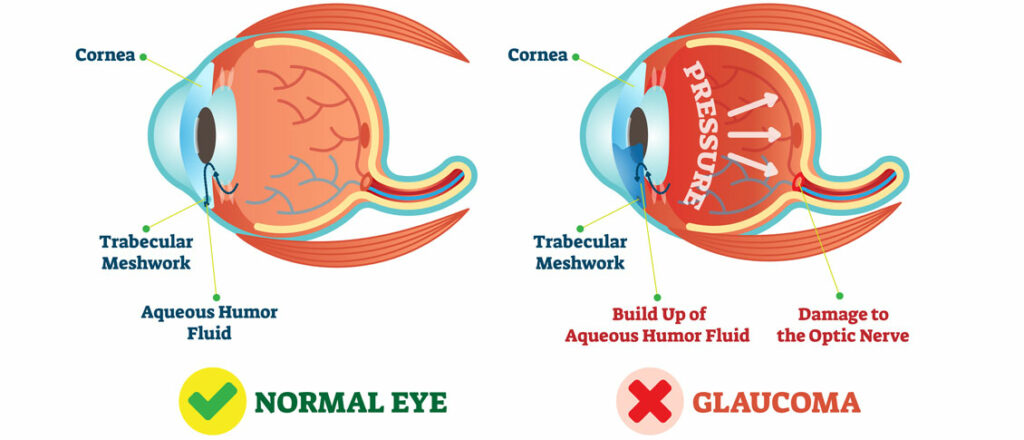
Human eyes are amazing, but also incredibly complicated.
The downside is that this means we can experience problems with our vision health if just one thing goes wrong. One factor that might not seem obvious is the pressure of the fluid in the chambers of the eye. If it rises too much, it can damage the optic nerve and lead to permanent vision loss. This is known as glaucoma.
The Fluid System of the Eye
Our eyes are filled with clear fluid. The front chambers contain aqueous humor and the larger rear chamber contains vitreous humor. In a healthy eye, the pressure of these fluids remains within a healthy range because old fluid drains out through the pupil at the same rate as new fluid is produced. Glaucoma can interrupt this essential drainage cycle, causing the pressure to rise to dangerous levels.
The Main Types of Glaucoma
The two main types of glaucoma are open-angle and angle-closure. The first happens very suddenly, when the drainage canals are physically blocked by the iris. Multiple symptoms usually serve as warning signs, such as headaches, nausea, extremely blurry vision, halos around lights, and eye pain. Go straight to the eye doctor if you experience these symptoms.
90% of glaucoma cases (meaning about 2.7 million per year) are open-angle. In this form of glaucoma, the eye’s drainage canals become clogged over time, preventing effective draining. The process is so slow that the patient may not notice it until the later stages, which is one reason regular comprehensive eye exams are so important. The earlier we catch open-angle glaucoma, the earlier we can begin treatment and prevent additional damage.
What Are the Risk Factors of Glaucoma?
Everyone is at some level of risk for developing glaucoma, but certain factors make it more likely. Closed-angle glaucoma is a bigger risk for people of Asian descent, while African-Americans, Hispanics, and the elderly are more likely to develop open-angle glaucoma.
Apart from age, heredity is one of the biggest glaucoma risk factors. Studies estimate that more than half of glaucoma cases are familial, meaning that someone with a sibling who has glaucoma is ten times more likely to get it than someone who doesn’t. Other risk factors include steroid use and eye injury.
Early Diagnosis Is Crucial for Saving Eyesight
Currently there is no way to reverse the damage glaucoma does to the optic nerve. That may change in the future, but modern treatments can halt the disease’s progress, particularly in the early stages. You can protect your eyesight by learning about your personal risk factors and keeping up with your regular eye exams! Click here to schedule an eye exam with our prestigious team of doctors and make 2021 the year you focus on your health and that of your family.

